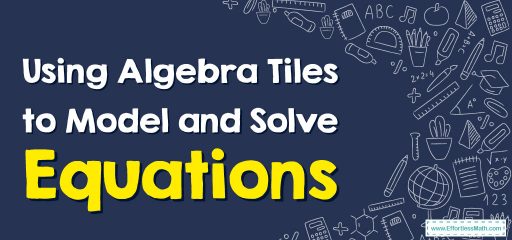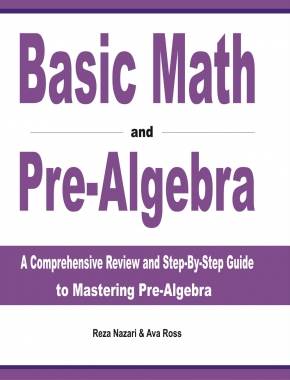Using Algebra Tiles to Model and Solve Equations
The purpose of this article is to instruct you on how to employ Algebra tiles for modeling and resolving equations. Algebra tiles provide a straightforward method for both modeling and solving equations.

A step-by-step guide to using Algebra tiles to model and solve equations
Here is a step-by-step guide to using Algebra tiles to model and solve equations:
- Start by understanding what Algebra tiles are. They are small, square tiles that are used to represent variables and constants in equations.
- Familiarize yourself with the different types of Algebra tiles. There are positive and negative tiles that represent positive and negative variables or constants, and there are tiles that represent zero.
- Write the equation you want to model and solve. Make sure to simplify it as much as possible.
- Use the Algebra tiles to represent the variables and constants in the equation. Place the positive tiles on the right side of the equation to represent positive values and the negative tiles on the left side to represent negative values.
- Use the zero tiles to balance the equation. The goal is to have the same number of positive and negative tiles on each side of the equation.
- Combine like terms by stacking tiles of the same value on top of each other.
- Use the tiles to solve for the variable. You can do this by isolating the variable on one side of the equation and then solving for its value.
- Check your answer by plugging it back into the original equation and verifying that both sides are equal.
By using Algebra tiles, you can visualize and manipulate equations in a tangible way, making it easier to understand and solve them.
Using Algebra Tiles to Model and Solve Equations – Example 1
Calculate the equation.

Solution:
Left side of the equation is \(2x+2\).
Right side of the equation is 6, which means 6-tile of 1.
So, \(2x+2=6→x=2\)
Using Algebra Tiles to Model and Solve Equations – Example 2
Calculate the equation.

Left side of the equation is \(x+3\)
Right side of the equation is 7, which means 7-tile of 1.
So, \(x+3=7→x=4\)
Related to This Article
More math articles
- How to Solve Linear Equations in Two Variables?
- 6th Grade PARCC Math Worksheets: FREE & Printable
- Derivative of Logarithmic Functions: A Hard Task Made Easy
- Top 10 Tips to Create the TExES Core Subjects Math Study Plan
- ISEE Middle-Level Math Worksheets: FREE & Printable
- Which Test Should You Take: GED, TASC, or HiSET?
- 3rd Grade MCAS Math Practice Test Questions
- Direct, Inverse, Joint, and Combined Variation
- The Ultimate STAAR Algebra 1 Course (+FREE Worksheets)
- How to Perform Vector Addition and Subtraction

















What people say about "Using Algebra Tiles to Model and Solve Equations - Effortless Math: We Help Students Learn to LOVE Mathematics"?
No one replied yet.